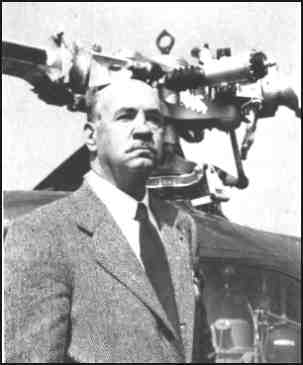
1889-1972 |
 |
|
with one of his whirlybirds |
|
Modest and unassuming, he's a truly great scientist and can be officially called "Doctor" as the result of many honarary degrees awarded him by as many colleges and universities. Today he is Engineering Manager of Sikorsky Aircraft Division of United Aircraft Corporation and one of the best loved figures in aviation where his interest never cools. He is in great demand as a speaker. Born in Kiev, Russia in 1889, he was attracted to aviation as a schoolboy. Following graduation from Petrograd Naval College, he studied engineering in Paris and at Polytechnical Institute in Kiev, and then returned to Paris to study the new field of aviation. Back to Kiev, he built his first helicopters, but power was lacking, so he turned his attention to fixed-wing aircraft. What happened after that is history, and his early planes won him national recognition as well as F.A.I. License Number 64. Sikorsky developments during that period are well known, such as the first multi-engined airplane. So, too, are his developements since that time, such as the Pan Am amphibians and other flying boats. While his many aircraft developements brought new luxury, new ease of handling in bigger and better planes, his work in more recent years has been extensively in the helicopter field. In fact, Igor gave America its first successful helicopter in 1939 when his ship, the VS-300, lifted a few feet off the ground. Developement after that was rapid, and today's Sikorsky helicopter creations are making history in military and civilian circles, with unlimited possibilities for the future. Unquestioned leadership in rotary-wing aeronautics, plus his many other contributions, have won for him a list of honors that in abbreviated form would take an entire page of the CHIRP. His fellow EB'S hail him and wish him many more years of successful work in the field of aviation. |
|
|
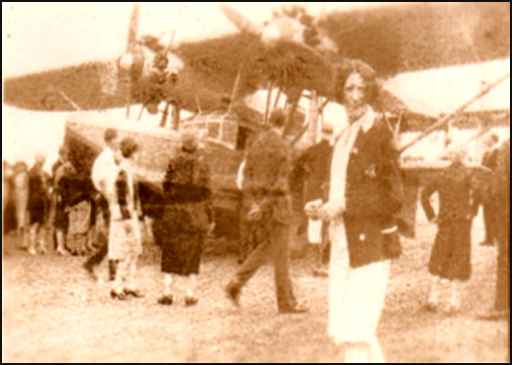 |
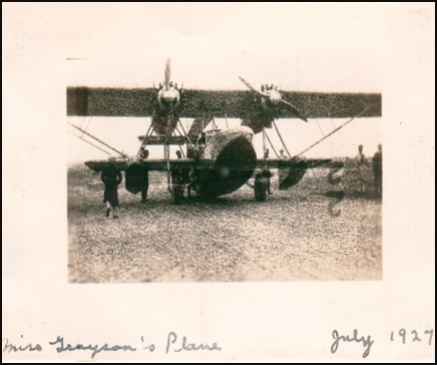 |
|
|
|
via email from Gregory Powers, 10-31-06 She was lost with her crew after her new Sikorsky S-36 took off from New York City for New Foundland in Dec 1927 on the first leg of an attempt to be the first woman to successfully fly the Atlantic. They were never found. Frances Wilson_Grayson About her navigator, Brice Herbert Goldsborough, see in Wikipedia: Brice Herbert Goldsborough About her pilot, Oskar Omdal, see in Wikipedia: Oskar Omdal |
|
|
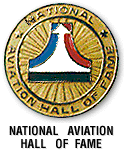 |
To visit his entry on this site, first click on National Aviation Hall of Fame to go to the homepage. Next, highlight and click on "Enshrinees List" at the lower left corner of the page. You will find an alphabetical listing of all enshrinees on this page. Then highlight and click on his name. |
|
HISTORICAL ARCHIVES INC "This Foundation is dedicated to acquiring, preserving and protecting the historical materials that chronicle the aviation careers of Igor Sikorsky, the companies he founded and the accomplishments of its employees. The collection dates from the latter part of the nineteenth century to the present. It consists of approximately 5,000 cubic feet of Sikorsky historical documents, blueprints, photographs, engineering windtunnel and watertest models of Sikorsky's three different aeronautical accomplishments; fixed winged and multi-engined aircraft, transoceanic flying boats and helicopters. Also included are several books that Mr. Sikorsky authored and many personal artifacts" This introduction was excerpted from the website of the Igor I. Sikorsky Historical Archives, inc. To access this very valuable resource you can click on the title above. |
|
ON THE AEROFILES WEBSITE |
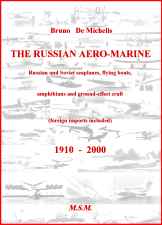 |
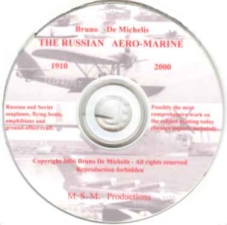 |
|
Product Details - Book Hard cover: 324 pages Publisher: MSM PRODUCTIONS Price: $60 postpaid |
Product Details - CD Files: Adobe PDF and MS Word Publisher: MSM PRODUCTIONS Price: $30 postpaid |
|
|
|
Igor Sikorsky, who revolutionized flying in both war and peace with the developement of the helicopter, died Thursday October 26, 1972
of a heart attack at his home in Connecticut. He first built a crude helicopter in his native Russia in 1909. It failed for lack of suitable engine and engineering know-how and Sikorsky became involved with fixed wing aircraft. His multi-engine "Illia Mourmetz" bomber, produced in 1914 was the world's first. But the helicopters remained dominant in his thoughts and in 1938 he built his model VS-300. It was powered by a four cylinder, 75 hp air cooled engine. Its three bladed main rotor was 28 feet in diameter. On September 14, 1939 it lifted a few feet off the ground to record the first successful flight of a direct lift aircraft. Although retired from Sikorsky AirCraft division of United Aircraft Company, he continued actively as a consultant, making an outstanding contribution when he developed the Skycrane. January 1973, Number 79 |


|